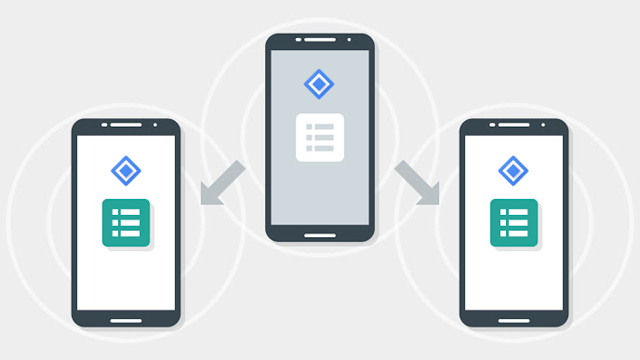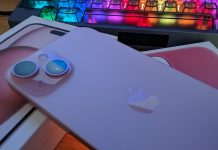
Google is getting serious about Peer to Peer (P2P) communications, launching the Nearby 2.0 API that was first introduced at Google I/O back in May.
The Nearby 2.0 API allows for ‘high bandwidth, low latency, encrypted data transfers between nearby devices in a fully-offline P2P manner.’
The API uses WiFi, Bluetooth LE & Classic Bluetooth to establish and transfer data between devices. Google says they use the strengths of each of these wireless communications standards, while ‘circumventing’ the weakest points of each. Google says there are two types of topologies used by the new API:
- Star: Useful for creating 1:N topologies where there’s a centralized device that others are especially interested in. For example, the host of an offline game, or the teacher’s device in a classroom quiz app.
- Cluster: Useful for creating M:N topologies that allow for creating looser mesh-like networks. For example, a classroom app that supports forming ad-hoc project groups for realtime collaboration, or an offline hyper-proximity-based chat app.
The new API allows for a whole range of use cases which include:
Imagine walking into a hotel room and having the temperature set just right, your favorite sub-genre of progressive-math-rock playing in the background, and the TV urging you to continue binging on your saved guilty-pleasures watchlist. What if your phone’s contact book could expand to merge with your spouse’s when you’re together, so you’re never again put in the excruciatingly compromising position of having to ask for your mother-in-law’s phone number (which you ought to have had on speed dial, in your favorites, and listed as an emergency contact)? Now imagine a world where you can drive up to an empty driveway or private parking space in a city like New York or San Francisco, and negotiate with that space to rent it out until its owner returns.
These use cases aren’t too far in the future either, with Google working with a number of partners including The Weather Channel, Hotstar and GameInsight as well as their own Android TV team who are working on ‘building a remote control app (powered by Nearby Connections) to simplify initial setup, and to enable subsequent second screen experiences’. The Nearby API will be showing up in these apps with a variety of different use cases including:
- The Weather Channel is building on-demand mesh networks in data-deficient areas to spread urgent weather warnings.
- Hotstar enables offline media sharing in places with spotty/no internet connectivity (like on public transportation, airplanes, etc.)
- GameInsight is using Nearby Connections to not only find nearby players, but also to run entire games offline.
Google has updated the Nearby Developers site with more information on how to integrate the technology into apps. One of the best use cases we’ve seen for Nearby is in Pocket Casts which lets you compare podcast lists with users nearby, if you haven’t tried that out you really should.




Surely, at a more boring level, there is also the potential to dramatically improve the experience when replacing an Android handset with a new model, by directly transferring local settings from one device to the other?